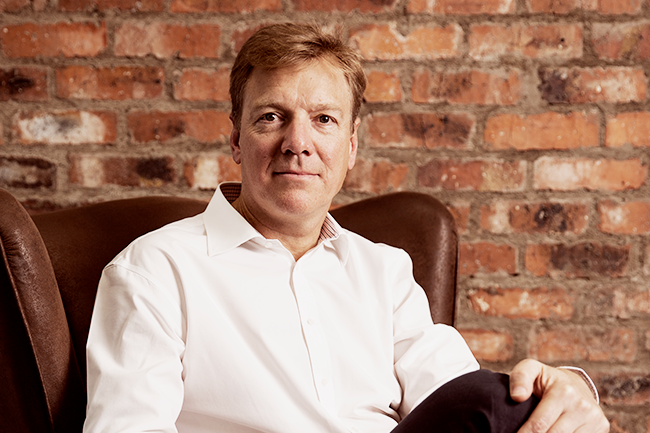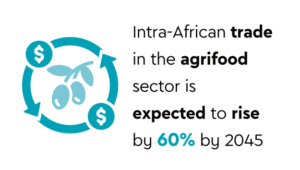We live in a world where downtime, failures and even split-second delays have become unbearable. Equally crucial to our existence, particularly those in the commercial, industrial and scientific sectors, is being able to access and send information in real-time, given that these sectors are being challenged by ever-more aggressive competitors and demanding customers and users. The fact is, data has become more precious than gold. It is, in fact, one of the most potent forms of property ownership, even for Joe Public, who has become a global citizen through streams of open platforms that allow photographs to be posted, comments to be shared, news to be spread.
Technology has introduced us to faster computing speeds; better internet connectivity – and now, with access to high-quality, readily available IT through fibre, submarine cables and the cloud, IT is without doubt the lifeblood of business today. And the cloud is the most significant technology game changer to date.
This is undoubtedly true for Teraco Data Environments, which is now experiencing its third wave of growth, on the back of extensive migration by enterprises to the cloud. Jan Hnizdo, MD of Teraco, describes the organisation as a builder and operator of co-location data centres, the meaning of which becomes more evident as Hnizdo explains the origins of data centres. ‘Before the cloud existed, organisations ran their IT operations off server infrastructure, usually housed in their own data centres and managed by IT teams who would be required to ensure updates as needs demanded or as the IT landscape changed. ‘Teraco entered the market as a “neutral vendor” and co-location data-centre provider in 2008. Instead of organisations having to support their own data centres, they could now rent space for their servers, switches and other computing hardware from Teraco.’
Teraco’s entry coincided with the liberalisation of the telecoms environment in South Africa. The Independent Communications Authority of South Africa had begun to issue telco licences on an unrestricted basis. ‘Overnight the telco landscape was flooded with hundreds of applications and the sector started to flourish,’ says Hnizdo. ‘Our niche opportunity was that we were then, and still are today, the only vendor-neutral data centre provider in South Africa, able to provide data-centre services that do not conflict with those of any of our clients. This neutrality enabled us to become the meeting point for all telcos to interconnect with one another, a situation that they were previously unable to do given the competition among them.’
Today more than 200 telco operators and 50 cloud and content providers are deployed in Teraco, which has a client base of more than 500. Consider that through this mix, there are some 15 000 interconnections, across 20 000 m2 of data-centre floor space, in four locations – one each in Cape Town and Durban and two in Johannesburg – provisioned with 100 MVA of utility power and erected at a cost of more than ZAR3 billion.
After Teraco’s welcome entry, a second growth phase developed when content providers such as Amazon, Facebook, Google, Microsoft and Netflix deployed their content-delivery nodes in South Africa. A content-delivery node is a system of distributed servers that delivers pages and other web content to a user, based on the user’s geographic location. This service is effective in speeding up the delivery of content from websites with high traffic and global reach. The closer the node is geographically to the user, the faster the content will be delivered. ‘Teraco was attractive to cloud and content providers as a node-deployment location, not only because of our proven technical abilities and service levels but because of the “open access platform” we could provide,’ says Hnizdo, meaning they could achieve maximum distribution from their nodes by deploying through Teraco instead of in an individual telco provider’s data centres.
Teraco is now on the brink of its third wave of growth, given that enterprises are moving into the cloud. Banks and corporates, for example, are reaching end-of-life cycles for their own data centres, and considering deploying in co-location facilities such as Teraco’s to achieve lower operating costs and enable easy access to the cloud. ‘When these legacy facilities were built eight to 10 years ago, there was less business pressure if systems failed. They were also built against a backdrop of a more reliable electricity grid. Today most enterprises can’t afford to be dependent on an unreliable power source, needing as they do to be online in real-time, all of the time,’ says Hnizdo. ‘There is also the sophistication of today’s servers that needs to be considered, which requires constant cooling and stable power availability. Most of these legacy data centres really struggle with this, given how much power newer server technology consumes.’
The tech-savvy will understand that a typical corporate data centre is often inefficient and operates at between 2.5 and 3.5 PUE, which is the measure of power usage effectiveness in data centres. Hnizdo translates this for us: ‘For every 1 unit of electricity that the IT equipment uses, a further 1.5 to 2.5 units of power is used by the facility itself, typically in the cooling systems. Inefficiency occurs because legacy data centres are not fully utilised, generally at around 40%. Their cooling systems are now old and inefficient, and with electricity costs increasing by more than 100% in the past five years, these end-of-life data centres have become extremely costly to operate.’
That’s good news for Teraco, as is a recent Gartner survey, which predicts that 80% of an enterprise’s IT processes will be in the cloud by 2025, versus the 30% that resides there now. ‘That’s a lot of infrastructure for individual companies to hope to maintain,’ says Hnizdo. ‘Especially considering a fragile economy that requires lean operations.’ Owning and operating data centres comes with the responsibility of minimising operating costs, specialist knowledge and expertise, and, as mentioned before, high energy consumption. ‘A truly neutral, open-access facility like Teraco is a massive business enabler and solution provider in today’s digital era, so why would enterprises want to build and operate their own data centre infrastructure at enormous cost, especially when it is not a core focus for most businesses.’ The advantages are numerous: for example, Teraco’s pay-as-you-use structure; the ability to flexibly deploy on demand; and the option to tailor IT infrastructure to an enterprise’s migration process to the cloud.
There are other Teraco services that are equally as attractive. It operates and maintains Africa’s largest internet exchange infrastructure, NAPAfrica, which is the point at which hundred of physical networks connect to each other to exchange internet traffic, including emails, photographs, video and even voice. Banks and corporates use this platform to exchange business data. NAPAfrica provides direct access to more than 350 unique networks, directly servicing more than 26 countries in sub-Saharan Africa. Peering through the exchange offers access to global content delivery networks at no cost.
Another service is the Africa Cloud Exchange, which Hnizdo describes as a highly secure physical interconnection point for all cloud providers such as Amazon via AWS Direct Connect and Microsoft via its Azure ExpressRoute, and their users, be they local or global. ‘This infrastructure improves enterprise hybrid and multi-cloud performance, which enables organisations to do more in the cloud because they are tapping into a secure, direct and flexible network.’
Given the progress over the past decade, there is likely to be no slowing down in IT demand, whether that be the need to store, back up, activate, transport or process data. For a data-centre provider such as Teraco, these are positive signs that affirm its position on growth. ‘There are also several physical public cloud deployments under way in South Africa. Microsoft, for example, has finished building its local data centres in the country. AWS is doing likewise in Cape Town, with Huawei joining the fray to bring its public cloud into Africa,’ says Hnizdo. ‘Submarine cable capacity continues to increase inclusive of Google’s announcement of Equiano, a cable that will link the western seaboard of Africa with Europe, including multiple landing stations in African nations. The terrestrial fibre capacity across sub-Saharan Africa continues to expand at an exponential rate, with every part of the continent becoming more heavily vested in telecoms.’
As for Teraco? ‘We continue to increase our investment in data-centre infrastructure, ensuring we remain the content and cloud hub for Africa.’


















